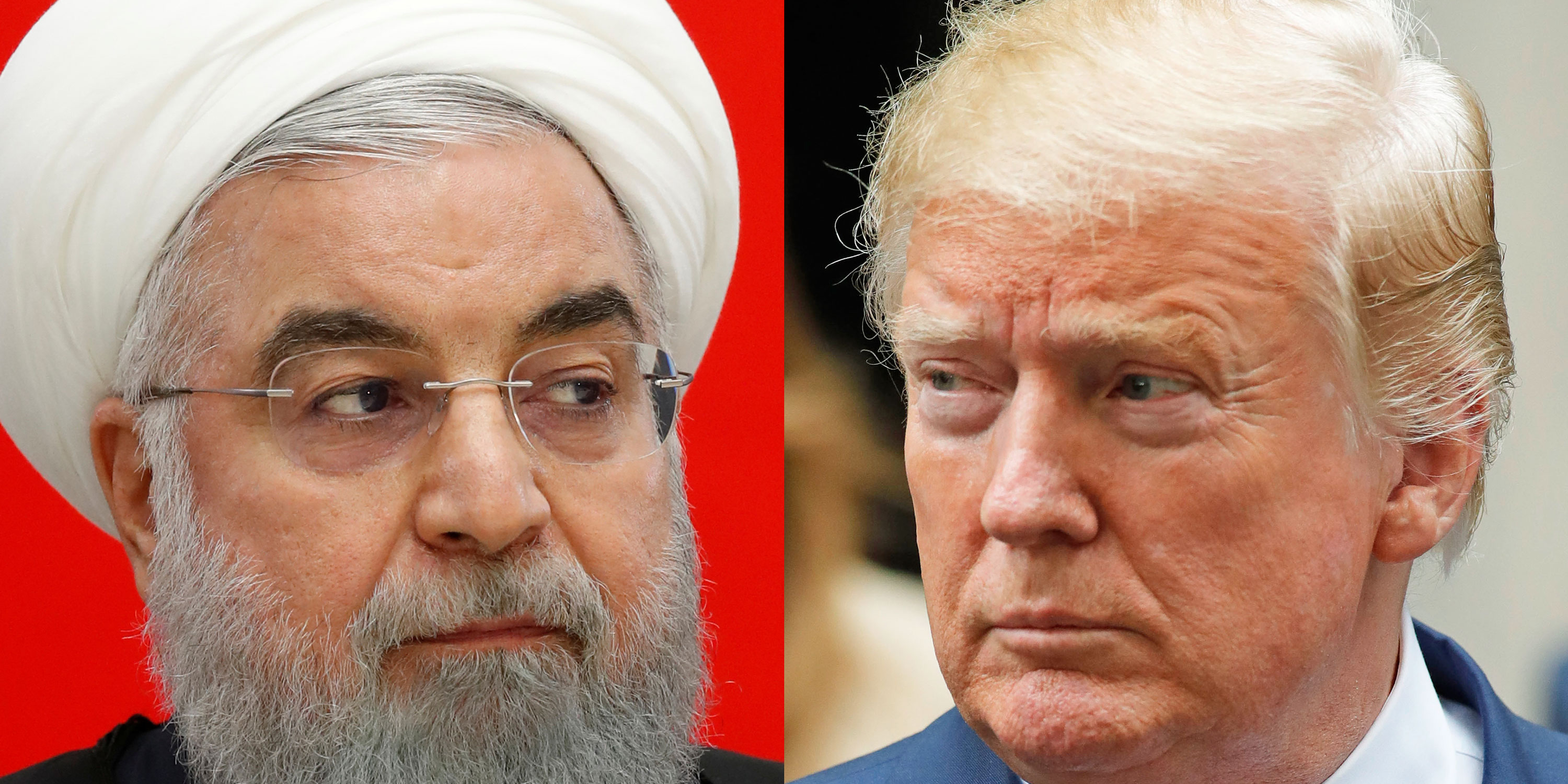- President Donald Trump tweeted Friday morning that he called off a military strike against Iran 10 minutes before it was set to go over concerns about casualty estimates and proportionality.
- Experts raised concerns about the process leading up to the ultimately halted strike if Trump’s decision was indeed based on last-minute information about civilian casualties.
- “It’s about as far from normal as you can get,” said Ned Price, a former National Security Council spokesperson under President Barack Obama who said the Pentagon normally informs the president of potential civilian casualties at the beginning of briefings.
- Visit Business Insider’s homepage for more stories.
President Donald Trump on Friday tweeted that he made a game-time decision to halt a military strike against Iran over last-minute information about civilian casualties, leading to questions over whether Trump was properly briefed on the operation based on standard White House and military protocol.
“We were cocked & loaded to retaliate last night on 3 different sights when I asked, how many will die. 150 people, sir, was the answer from a General. 10 minutes before the strike I stopped it,” he wrote, adding that the loss of life would not be “proportional” to Monday’s attack on a US drone.
But experts are raising concerns about Trump’s recounting, saying that typically, a concept of operations, or CONOPs, for any type of military action would include discussion of casualty estimates early in the process. This assessment up front can highlight legal concerns and the possibility it could provoke a retaliation.
Sam Vinograd, the senior adviser to the national security adviser under President Barack Obama, tweeted Friday that, “having been part of military CONOPs briefings, they always include an assessment of casualties on both sides at the front end.”
Vinograd later tweeted, "Any responsible NSC process would have included an intel assessment of what Iran is currently up to AND how they would respond to US strikes" and that the military and intelligence community "painstakingly" assess potential civilian casualties.
Ned Price, the former spokesperson for the National Security Council under Obama, told INSIDER that Trump's tweet indicates a process that is "about as far from normal as you can get."
"The Department of Defense tends to include information on expected casualties as one of the topline points," he said, echoing Vinograd's point that a casualty assessment should have been one of the first things discussed when planning a military operation.
"The fact that Trump had to ask underscores my fear that there's absolutely no process, even when it comes to the most important questions of war and peace. It's another datapoint that Bolton is filtering information before it gets to Trump, which almost certainly speaks to how we got to this point," Price said, referring to national security adviser John Bolton.
The White House did not immediately respond to a request for comment from INSIDER.
Trump's Iran strategy has been unpredictable, particularly since the attacks on a Japanese tanker and a Norwegian tanker in the Gulf of Oman on June 13. But while Trump's decision not to go through with the strike was a good one, the volatility of his process is still cause for concern.
Whether Trump had previously been told the casualty estimate and changed his mind at the last minute, or he didn't learn the numbers till bombers were in place, a last-minute decision - and his tweets about it - point to an uncoordinated effort behind a potentially massive regional conflict.
House Speaker Nancy Pelosi on Friday was asked if the president should have been informed about civilian casualties before he gave the go-ahead for the strike. "That's something you'd have to ask the White House, but I imagine - it would make sense, if you are considering options, that you know what the consequences are before you make a decision to go forward," Pelosi said.
"I think no process can survive a mercurial president." Ivo Daalder, a US Ambassador to NATO under Obama and the current president of the Chicago Council on Global Affairs, told INSIDER.
On Friday afternoon, Trump clarified his account of the aborted strike, telling NBC's Chuck Todd that he hadn't given final approval to the strikes and that planes were not in the air "but they would have been pretty soon" when he made the decision to back down. Trump told Todd that he asked for a casualty estimate at that point.
Ryan Goodman, the former special counsel to the Department of Defense under Obama, tweeted that Trump's story "doesn't add up."
"Is Trump suggesting the Pentagon brought him a plan without having those figures?" he tweeted, referring to casualty estimates.
"I don't believe that anyone told him that 150 people were going to die - it's too precise a number," Daalder said, telling INSIDER he thought that casualty estimates would have come up in the process.
Daalder said that Trump has been uncomfortable with recent military escalation, repeatedly signalling that he doesn't want to go to war with Iran.
"I just think he stepped back. That is his pattern. He speaks loudly and carries a small stick," Daalder said. "The fact that he actually constructed that entire tweet thread suggests that he was trying to create a new narrative."
